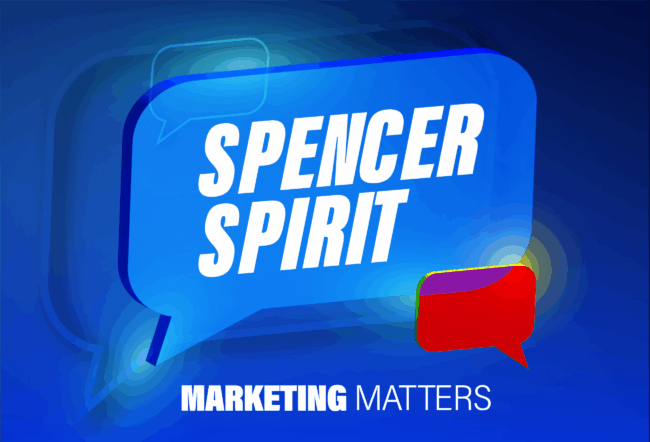If you have watched and shared PSY’s “Gangnam Style” video or gone into an unknown restaurant simply because it was full of people and appeared to be popular, you have the basis for understanding what makes things go viral. In Wharton marketing professor Jonah Berger‘s new book, Contagious: Why Things Catch On, he identifies six principles that cause people to talk about and share an idea or product. Knowledge at Wharton recently sat down with Berger to learn more about his findings, including why people share cat memes, which organizations and individuals have conceived and implemented the most successful viral campaigns — from Blendtec to ‘Movember’ — and why making something contagious does not have to be expensive.
An edited transcript of the conversation follows.
Knowledge at Wharton: Jonah, thank you for being here today. Your book is all about what makes different products or ideas catch on. What do you think are the biggest misconceptions out there about why things go viral?
Berger: The easiest place to start would be cats. [If you ask], “Why do things go viral?” people usually give one of two answers. They say, “Oh, it’s random. It’s luck. It’s just chance.” Or they say, “It’s cats.” If you look on the web, there are viral cat pictures, so it must be cats that drive things to go viral.
There are definitely some cat things that become popular, but that really doesn’t tell us anything about why most things go viral. It doesn’t tell us why some cat videos are shared and others aren’t, and it doesn’t tell us why things that have nothing to do with cats go viral. It’s like noticing that Bill Gates, Bill Cosby and Bill Clinton are all names that start with “Bill” and deciding to name your child Bill because that will make them famous. It’s messing up correlation and causation.
What the book is all about is teasing apart the luck and random stuff, with science, and actually trying to understand what makes people talk about and share things.
Knowledge at Wharton: In the book, you actually outline a framework of six principles for why things catch on, using the STEPPS acronym. Can you describe those for us and discuss how you developed them?
Berger: The books talks about the six key steps to drive people to talk and share. STEPPS is an acronym for:
- Social currency:, It’s all about people talking about things to make themselves look good, rather than bad
- Triggers, which is all about the idea of “top of mind, tip of tongue.” We talk about things that are on the top of our heads.
- Ease for emotion: When we care, we share. The more we care about a piece of information or the more we’re feeling physiologically aroused, the more likely we pass something on.
- Public: When we can see other people doing something, we’re more likely to imitate it.
- Practical value: Basically, it’s the idea of news you can use. We share information to help others, to make them better off.
- Stories, or how we share things that are often wrapped up in stories or narratives.
Knowledge at Wharton: Which of these principles do you think are most difficult for companies or individuals to harness when they are trying to promote a product or an idea or just get something to catch on?
Berger: People often say, “Well, we have to do something crazy.” Guerilla marketing and viral marketing is about dressing people up in chicken suits and running down to the subway and handing out $100 bills. That will get attention. That’s really not the right answer. It is true that remarkable things get talked about and shared. But there are a lot of other drivers of sharing. One big thing we talk about is triggers — how cues in the environment remind us of related things and cause us to talk about them. If I said, “peanut butter,” you might think of “jelly.” If I said, “cat,” you might think of “dog.” Peanut butter is basically a little advertisement for jelly. It’s not actually there, but it reminds you of that related thing. Cues in the environment can remind us of products and ideas and make us talk about them more. Companies often don’t think about, “Well, what in the environment is going to remind consumers of my product or idea?”
Similarly, emotion. Companies recognize, “Hey, if we can get people to feel emotional, we’ll get them to talk and share.” Most companies get stuck because they say, “Well, hold on. Our product isn’t naturally emotional” or “Our product isn’t naturally remarkable — we just can’t do anything about it.” What the book is really about is showing both companies and individuals that anyone can craft contagious content. It’s not about having to have the right product. You have to think about what makes people talk about and share and then build that into your product or messaging. Any product can be remarkable. Any product can be emotional. Think about what makes people feel emotion or what makes them think something is remarkable, and then build that into your product or idea.
Knowledge at Wharton: There’s actually a great example of this in the book that has to do with blenders. Tell us about how the people at Blendtec made blenders fit this framework.
Berger: You could say new Apple products or hot cars or exciting Hollywood movies are naturally remarkable products. But who would talk about cement or toilet paper or a household appliance like a refrigerator or a blender? There’s nothing remarkable about a blender. But there’s a great example of a company, Blendtec, that actually made a blender video that’s gotten more than 10 million views…. They have a series of videos called “Will it blend?” — which has over 150 million views — where they stick all types of different things in a blender.
In my favorite video, for example, they stick an iPhone in the blender. They actually drop an iPhone in. They close the top, they press the button, and you watch the iPhone get torn up by this really, really strong blender. It gets reduced to shreds. Little shards of glass and all the other things that make up an iPhone. Lots of smoke. At the end of the day, it’s basically powder. Now you’ve never seen a blender tear an iPhone. You’ve never imagined that a blender could do that to an iPhone. Yet you see it, and it’s pure remarkability. You’re so amazed you have to share that with someone else because it’s so impressive. People share these videos, even though they are about a blender. The point at the end of the day is anyone can craft contagious content. Yes, they are selling a blender. Yes, a blender doesn’t seem like a remarkable product. But by finding the inner remarkability in their product, they got people to talk and share.
Knowledge at Wharton: What fascinated me about it was that the marketing director who had been hired realized that something they were doing every day — testing blenders — held opportunity for jumpstarting buzz for the firm.
Berger: Yes, George Wright, a new marketing hire, comes into the office. He notices a pile of sawdust on the floor on one of his first days at work. He asks, “Are we expanding the office? Why is there sawdust on the floor?” His colleague responds, “No, the CEO is doing what he does every day: trying to break blenders.” The CEO would take two-by-four pieces of wood, golf balls, Bic lighters and throw them in the blender to see if the blender was tough enough to withstand the punishment. He wanted to make a really strong blender.
George saw this and said, “This is a fantastic idea. This is gonna be a viral home run.” He took a $50 marketing budget — not $50 million, not $50,000 — but literally $50. Bought a white lab coat, some of those goofy glasses you often see people wear when they chop wood or something, and just filmed the CEO doing what the guy was already doing: trying to break blenders…. They distributed it to their mailing list, they distributed it to others, and it caught on like wildfire. People saw it, and they had to pass it on and share it with their friends.
It’s a great example of why it doesn’t take a huge marketing budget. It doesn’t take a marketing genius — though they are smart marketers — to think about this. What it takes is understanding the psychology behind social transmission — what makes us talk about and share things. Then by generating content or building in features of your products, you create that viral user growth.
Knowledge at Wharton: On the Internet, it’s often user-generated content that manages to generate giant page-view numbers and the viral sharing that many companies with much larger budgets and many more resources at their disposal would just die to have. What can companies learn from that?
Berger: Companies often think it’s about advertising [or about] creating a really slick message and putting it out there. [They think] it will be really persuasive. It’s more about being open, being authentic and letting consumers create their own content. But also, creating ads that build in an understanding of why people talk about and share things. People don’t want to share things that look like ads. They don’t want to look like they are a walking advertisement for a company. But they will share really engaging content, even if that content happens to relate to a brand.
A few years ago, Burger King had a great example on the web, the subservient chicken. You could go to this website, and you could type in whatever you wanted. This guy in a chicken suit would do whatever you typed in. For example, “Do a back flip,” and the guy in the chicken suit would do a back flip. “Hit a home run,” and he would look like he’s hitting a home run. But it wasn’t heavily-branded. It didn’t say, “Burger King, Burger King, buy Burger King” all over the page. The more you brand something, the more it looks like an ad, the less willing people are going to be to talk about and share it. You need to design content that’s like a Trojan horse. There’s an exterior to it that’s really exciting, remarkable and has social currency or practical value. But inside, you hide the brand or the benefit. “Will it blend” is a great example. It’s not a highly branded piece of content. People are watching it because they love to see this blender tear through things. But along the way, they’re learning about the brand. If, instead, they said, “Buy this blender. It’s fantastic. You’ll love it,” people wouldn’t share that with others, because it seems like an ad.
But that’s not just online. It also happens offline. There’s a great local Philly example of a restaurant here called “Barclay Prime,” that has a $100 cheesesteak. Now, you might sit there and ask, “$100 cheesesteak? What could be on a $100 cheesesteak?” Well, it’s everything from Kobe beef to lobster to truffles. It comes with a little bottle of champagne. It’s a remarkable product, particularly for Philly, where we often think about cheesesteaks. Again, people don’t want to seem like an advertisement for Barclay Prime, but they do love to talk about this remarkable product. Along the way, they talk about the brand. It’s about understanding what consumers like to talk about and then attaching your brand or your idea to a story that they want to share.
Knowledge at Wharton: You talked a little bit at the beginning about how a lot of people seem to think that going viral or becoming contagious is about luck, but that these six steps are what are really coming into play. For a company trying to harness these six steps, what kinds of issues do you see? How much do opposing market forces come into play? And what about sheer luck? Does luck have anything to do with it at all?
Berger: Imagine you’re a baseball player, and you’re hitting pretty well, but you want to raise your batting average. This book will show you how to raise your viral batting average. Can I guarantee you’ll be the next “Gangnam Style” with a billion views? Definitely not. I can’t guarantee that. But I can guarantee that it will raise the likelihood that consumers talk about and share your ideas. If a person on average tells one person, we can increase it to two. If half the people are talking about your product, we can increase it to 60%. We have evidence-based principles that show why people talk about it and share. There is some luck to get a billion views. You can’t mathematically put something together to guarantee that you’ll get that many views. There is a snowball effect on the web. But you can guarantee that more people will talk about your brand or more people will share your idea, if you understand why people talk and share.
Knowledge at Wharton: How have changes in the advertising and technology landscapes altered the nature of how things become contagious and, conversely, the reasons or the speed at which they maybe become uncontagious, or just peter out?
Berger: Advertising is great for broad awareness. It’s great because it makes many people aware that your product exists. But it’s not very persuasive. If we think about it, we’re much more likely to believe what our friends say than to believe what ads say. I’m not against advertising. If you have enough money to buy a Super Bowl commercial, and that’s worth doing on your end, it’s definitely worth doing. It gets broad, broad awareness. But it’s not going to be very persuasive. What’s going to be persuasive is hearing from a friend or a colleague or someone you know that a product is good. Ninety percent of people believe what their friends say. Only about 30% of people believe what ads say. What I would say to businesses and organizations is, advertising’s not a bad thing. Indeed, it is one way to encourage word of mouth. But they should think about why people are going to talk about and share your ads once they’ve happened. How can you build content, both online and offline, that people will talk about and share?
This conversation is focused a lot on the web, and the web is important. But actually, much more word of mouth is offline than online. There has been so much focus recently on social media technologies — Twitter and Facebook and the newest shiny tool that’s out there. But if you think about it, five or six years ago you could have been an expert on MySpace. You could have gone to a talk that says, “MySpace is where you should spend all your resources.” You could have gone after that tool. Now that useful knowledge would be pretty worthless, right? No one’s really on MySpace anymore. Will Facebook be around in 10 years? Will Twitter still be around? I don’t know. Will people still be talking and sharing? Certainly. It’s more about understanding why people talk and share, whether it’s online or offline, rather than focusing on the technologies they are sharing through.
Knowledge at Wharton: Can you give an “offline” example of something that went viral?
Berger: One example I really like is the example of Movember. Nonprofits have a problem: most donations to nonprofits are pretty private. You know what you donate to, and you might even know what your spouse or your best friend donates to. But you don’t really have any idea what your friends or people at the office donate to. That action is pretty private. But because it’s private, it’s hard for that to catch on more broadly. If you can’t see what others are doing, it’s hard to imitate it. One idea I talk about in the book is making the private public — making what people are doing more observable or visible. A favorite example of that is this campaign called “Movember.”
A number of years ago in Australia, a couple of guys got together. They were drinking beers. They were talking and thinking about what would be fun to do just as a joke, for kicks. They decided to have a mustache-growing contest. They grew their best mustache. It happened to be the month of November, so they called it Movember. The next year, they had so much fun they wanted to do it again. They decided to raise money for men’s cancer. There are lots of campaigns for women’s cancers: the 5K races, Susan G. Komen Foundation and so on. Not so much for men’s cancers. But they had the really sharp idea of rather than just asking people for money, they would use mustaches as a public signal of that private behavior. For the month of November, you would grow a mustache, and you would ask people to donate money to support the cause for men’s cancers. But what’s really nice about that behavior, it’s a very public behavior…. If someone’s part of the campaign, you can see that he has a mustache on his face. If somebody in your office, who is a pretty buttoned-down guy starts sporting a mustache suddenly in the month of November — a big Rollie Fingers sort of mustache — you’re going to ask them, “Why are you doing this? What’s going on?” That will encourage them to talk about and share this Movember campaign, which will encourage you to do the same thing, either that year or next year. This is entirely offline, but public is a really simple way of getting ideas to catch on.
Think about Apple’s headphones. It used to be that we all carried portable CD players. It was like carrying a pizza. You had to run like this, to make sure it didn’t skip. Then, they came out with these things called mp3 players. Really great technology, but they were super expensive. Is it worth adopting this new product? How do I know if it’s worth adopting this new product? If you looked around on the subway or the bus, you couldn’t tell [which products people were using] because everyone’s headphones were black. It was impossible to see what device someone was using, as opposed to another device.
But what Apple did really smartly is they used white headphones. Once you start seeing a number of people wearing white headphones, you say, “Wow. A lot of people are using this. It must be really good,” which encourages you to adopt that product as well. It’s just like if you’ve gone to a foreign city and you don’t know where to eat. How you decide? You look for a restaurant that’s full of people. It’s a totally offline example. But you assume if it’s full of people, it must be really good. Thinking about how to make the private public, particularly in an offline environment, is a great way to help your product catch on.



